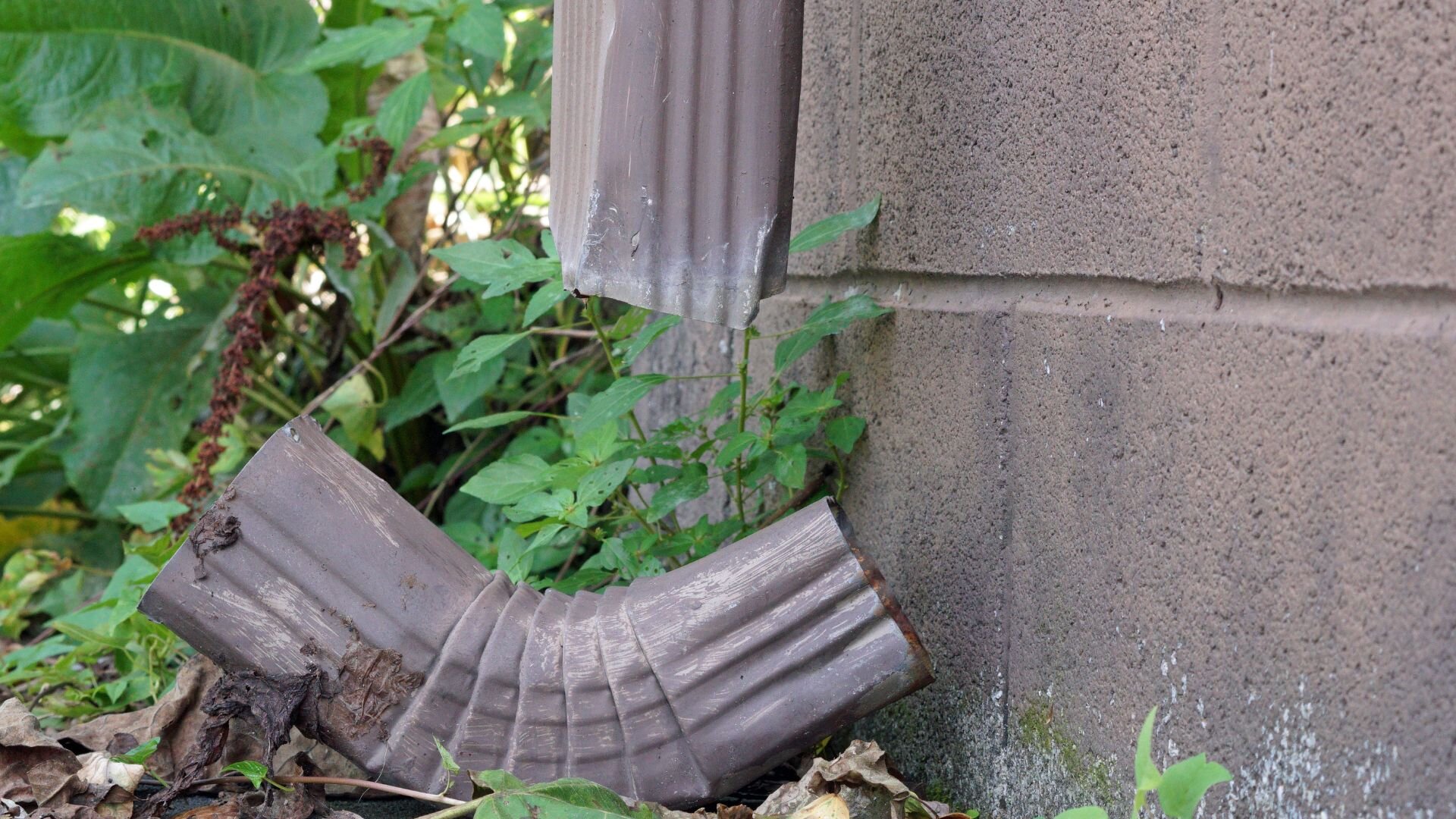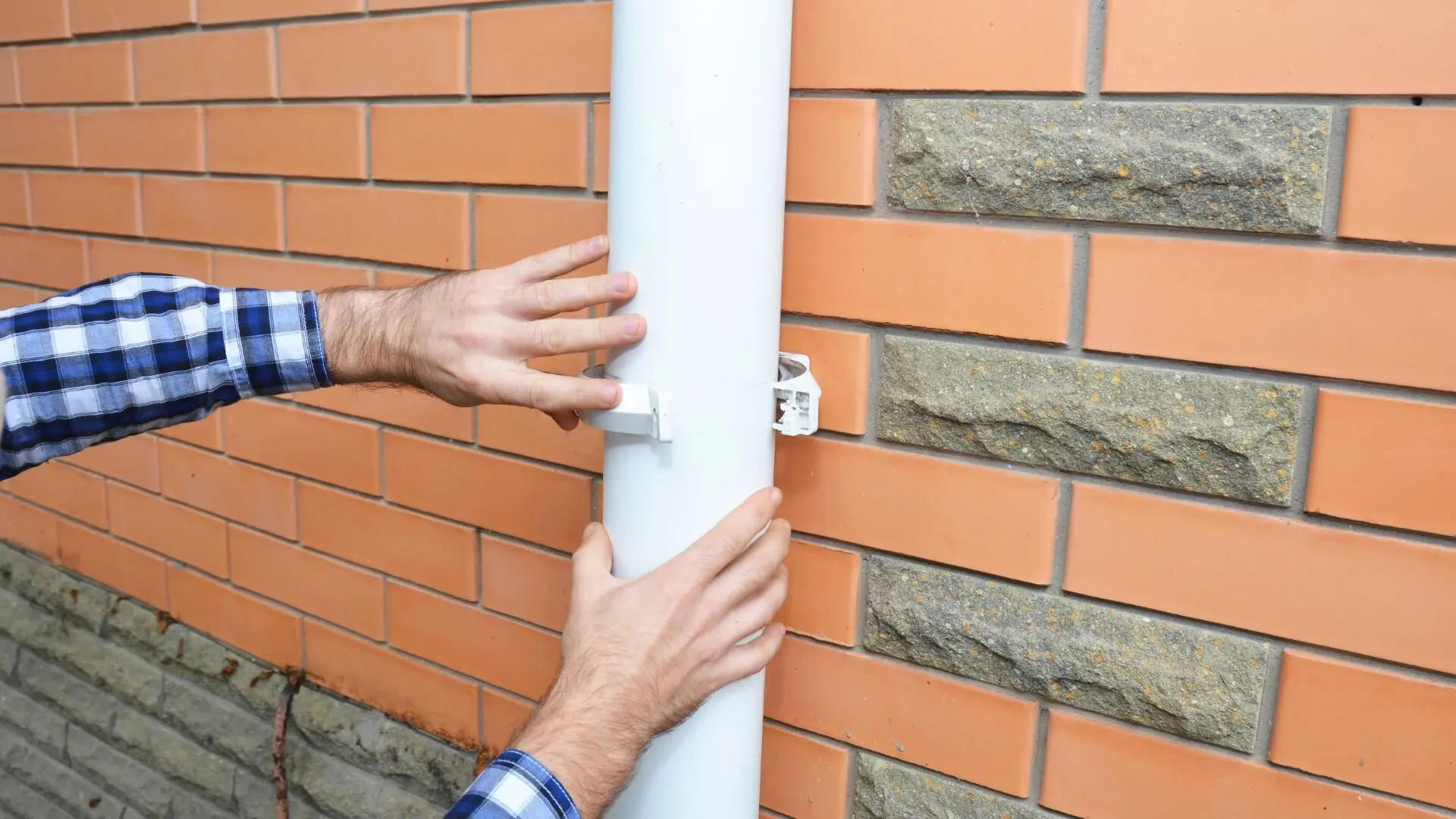Picture this: You’re enjoying a peaceful afternoon indoors when, suddenly, rain starts hammering down. Instead of smoothly draining away, water spills over your gutters like a mini waterfall. The racket is annoying, but worse, it’s a sign of trouble—a blocked downpipe.
Your drainage system might not be the flashiest part of your home, but it’s essential for protection. By guiding water away from your foundation, it helps keep troubles like mould and dampness at bay, saving you from potential structural headaches.
Gutters collect rainwater from your roof, while downpipes act as vertical pathways, directing this water away from your home’s foundation and into stormwater drains. But when a downpipe becomes blocked, this vital flow is disrupted, potentially causing many problems.
Let’s explore the culprits behind downpipe blockages and explore effective prevention strategies to keep your drainage system flowing freely.
What Causes Blocked Downpipes?

Debris Accumulation
Leaves, twigs, and other organic clutter are the main culprits of blocked downpipes. As the autumn breeze sweeps through, leaves can quickly build up in gutters, creating a dense layer that blocks water flow. Over time, this build-up worsens, eventually clogging downpipes and disrupting rainwater drainage.
Moss does more than just look ugly—it acts like a sponge, soaking up water and trapping debris, which worsens gutter blockages. The solution? Regular gutter cleaning. Whether you choose the DIY route or hire pros, keeping gutters clear will save you from bigger headaches.
Nesting Animals
It’s not just leaves that clog your gutters—birds and rodents sometimes turn them into their new homes! Unfortunately, their cosy nests can completely block water flow, leading to serious drainage issues.
Improper Installation
Poor installation can lead to hidden problems. Misaligned gutter angles can cause water to pool, fostering debris build-up. Narrow downpipes may not cope with large roof areas, causing overflows and blockages. Getting the gutter size right is key.
For smooth drainage, consider these:
- Installing gutter guards prevents leaves and debris from entering.
- Loose gutter straps allow gutters to sag, causing a downpipe blockage.
If unsure about gutter size or suspect improper installation, consult a professional roofer.
Weather Conditions
Even Mother Nature can contribute to downpipe blockages. Too much rain in a short time can swamp your gutters, while freezing temperatures bring a different headache—ice dams. When trapped water freezes, it expands and completely blocks the downpipe, making things even worse when it starts melting.
Tree Roots
Tree roots are another persistent foe of healthy downpipes. As these roots grow and expand in search of water, they can infiltrate and crack downpipes, causing blockages and potential leaks.
Leaking water –internal leaks from inside the roof cavity or dripping down the side of the external walls, gutters and downpipes. Left unchecked, tree root intrusion can lead to costly repairs not just for your downpipes but potentially for your home’s foundation as well. Maintaining a safe distance between trees and your home can help prevent this issue. In some cases, professional intervention may be necessary to remove roots that have become problematic.
Signs of Blocked Downpipes
A properly functioning drainage system works diligently behind the scenes, quietly channelling rainwater away from your home’s foundation. However, a blocked downpipe can disrupt this vital flow and lead to a host of problems. Here’s how to identify the telltale signs of a blocked downpipe before it causes significant damage:

Overflowing Gutters
This is the most obvious sign of a blocked downpipe. If water spills over the edges of your gutters instead of flowing freely through the downpipes, it indicates a blockage somewhere in the system.
Water Stains on Walls
If you notice water stains or damp patches on exterior walls, particularly near the base of your home, it could be a sign that water is overflowing from blocked gutters and seeping into the foundation.
Damp Patches Near the Foundation
Similar to water stains, damp patches around your foundation can indicate that water isn’t draining correctly due to a blocked downpipe. Left unchecked, this moisture can lead to serious problems like mould growth and structural damage.
Please don’t wait until it’s too late! A blocked downpipe might seem like a minor issue, but it can quickly turn into an expensive fix. If you spot the signs, act fast—your home (and wallet) will thank you.
Consider cleaning your gutters and downpipes and using a garden hose to flush out debris. For stubborn blockages or if you’re uncomfortable working at heights, consider professional help from a plumber. They can diagnose the problem and clear any blockages in your gutters and downpipes, ensuring your stormwater system functions smoothly again.
Preventative Measures for Healthy Downpipes

Blocked downpipes start with clogged gutters, so stay ahead of the game! Clean them regularly, especially in autumn when leaves are everywhere. Whether you grab a ladder or bring in the experts, a little maintenance goes a long way.
Gutter guards are a wise investment. Mesh guards filter debris, while brush guards and foam guards capture leaves.
Maintain a safe distance between trees and your home. Overhanging branches clog gutters, and roots can infiltrate downpipes. Consult an arborist for trimming or removal.
Here’s how to keep your downpipes healthy:
Regular Cleaning and Addressing Clogs
To remove debris, use a gutter vacuum or a combination of a sturdy wire and a hose. For stubborn blockages, especially deep within the downpipe, consider professional help to avoid damaging your gutters or downpipes.
Early Detection
Pooling water around your foundation is a telltale sign of a blocked downpipe. If you notice this, it’s important to address it quickly. Use a gutter vacuum or other professional tools to clear the blockage and prevent further issues.
Valley Gutter Care
Leaves and debris often pile up in these spots, so they need special attention. Regular cleaning with a gutter vacuum or professional tools is essential to keep water flowing smoothly.
Finally, inspect downpipes for cracks or damage, and fix them promptly—or replace them ASAP. Keep outlets clear for smooth water flow. These easy steps help prevent blockages and protect your home’s foundation.
By incorporating these practices, you can ensure your downpipes function smoothly. This includes regular cleaning, addressing clogs with tools like gutter vacuums and sturdy wires (or seeking professional help for tougher situations), and paying close attention to areas like valley gutters where debris can quickly accumulate.
Don’t Let a Blocked Downpipe Turn Into a Downpour Disaster!
Regular maintenance, including clearing a blocked downpipe every 1-2 years, is key to keeping your home’s drainage system healthy. Blocked gutters and downpipes can be a real problem, so staying on top of maintenance is a must!
If you need a free quote or consultation for clearing your blocked downpipe, get in touch with Fixed Today Plumbing. They’ll make sure your drains run smoothly, offering thorough cleaning services for a professional finish.














